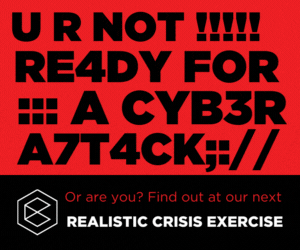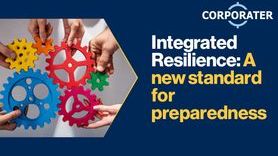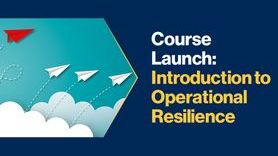Leading resilience by example: Not your average inspirational poster quote

Foreword: In this guest article, Aaron Dixon, Business Continuity & Resilience Specialist examines the driving force behind cultural resilience—strong leadership. He discusses how leaders can embed resilience into their organizations through their actions and examples.
The reality of leadership in resilience
You know those motivational posters—the ones with soaring eagles, dramatic sunsets, and vague words like Perseverance or Excellence? Well, leadership in resilience is NOT just about looking good on a poster. It’s about rolling up your sleeves, accepting that chaos is inevitable, and leading a team that doesn’t panic when the WiFi goes down for five minutes.
Real resilience isn’t about having a binder full of plans—it’s about encouraging a culture where preparedness feels natural, not just something the risk department worries about.
1. The ripple effect: leadership’s secret ingredient
Employees take cues from leadership. If management treats resilience planning like an optional safety briefing on an aeroplane (the one everyone ignores), guess what? The organisation will have that same dismissive attitude—until something goes wrong.
The best leaders don’t just approve continuity plans; they actively shape the organisation's preparedness by:
- Practicing transparency about potential risks
- Modeling proactive decision-making rather than waiting for disasters to strike
- Making resilience a daily conversation, not just a once-a-year audit exercise
Want proof? Look at industries like finance and logistics, where successful crisis management stems from engaged, forward-thinking leaders—not the ones just nodding along in meetings.
2. Embedding resilience values: less talk, more action
Leadership training often focuses on soft skills like communication and inspiration—great, but can they actually steer the ship when the engine fails? Organizations need to embed resilience in leadership training by:
- Running realistic simulations (not just those theoretical, “What if there’s a power outage?” drills—really push their problem-solving limits)
- Tying continuity planning to actual business outcomes (hint: preparedness impacts profits)
- Encouraging feedback from employees on resilience culture, so leaders know where there is room for improvement
3. Leading beyond the crisis
A resilient leader isn’t just useful when things go wrong; they help shape an entire mindset of continuity planning. They push teams to:
- Think ahead instead of scrambling in reactive mode
- Plan like disruption is inevitable
- Take continuity seriously without making it sound like impending doom 24/7
4. Leadership that actually works
Here’s the leadership cheat sheet:
- Resilience is a daily practice, not just a policy—act accordingly
- The best leaders prepare their teams to handle chaos, not fear it
- Lead with action, not just words—because nobody follows a leader who ignores the fire alarm
In the interests of transparency, AI was utilised to review and edit this article for grammar, clarity, and coherence, with final approval by human editors.








































